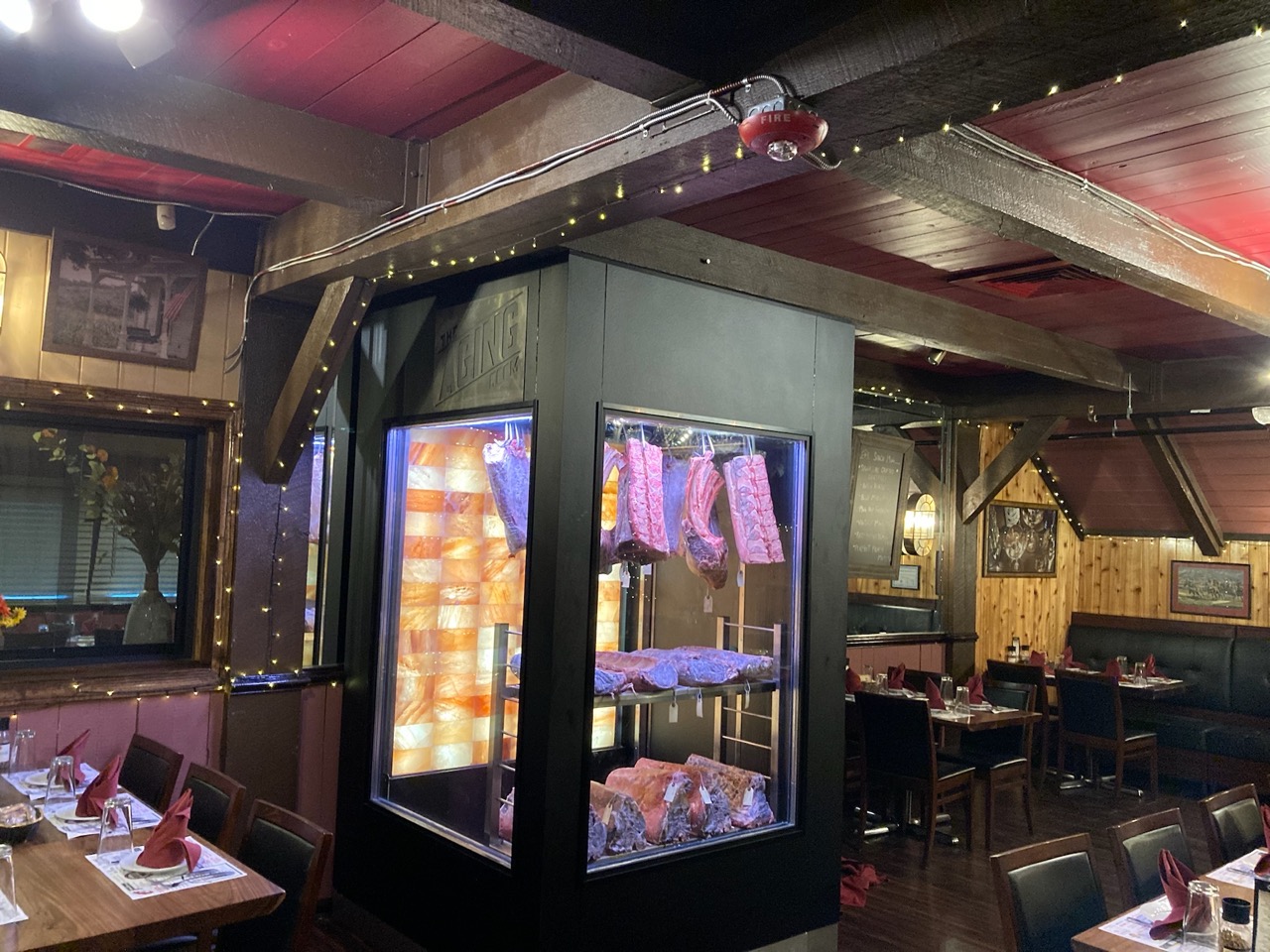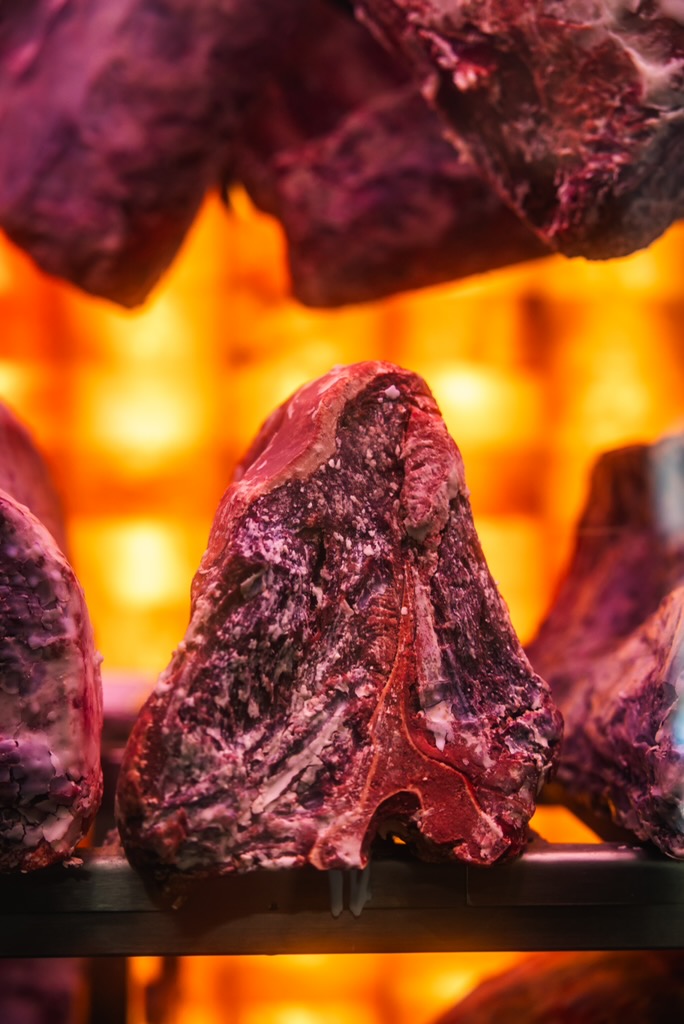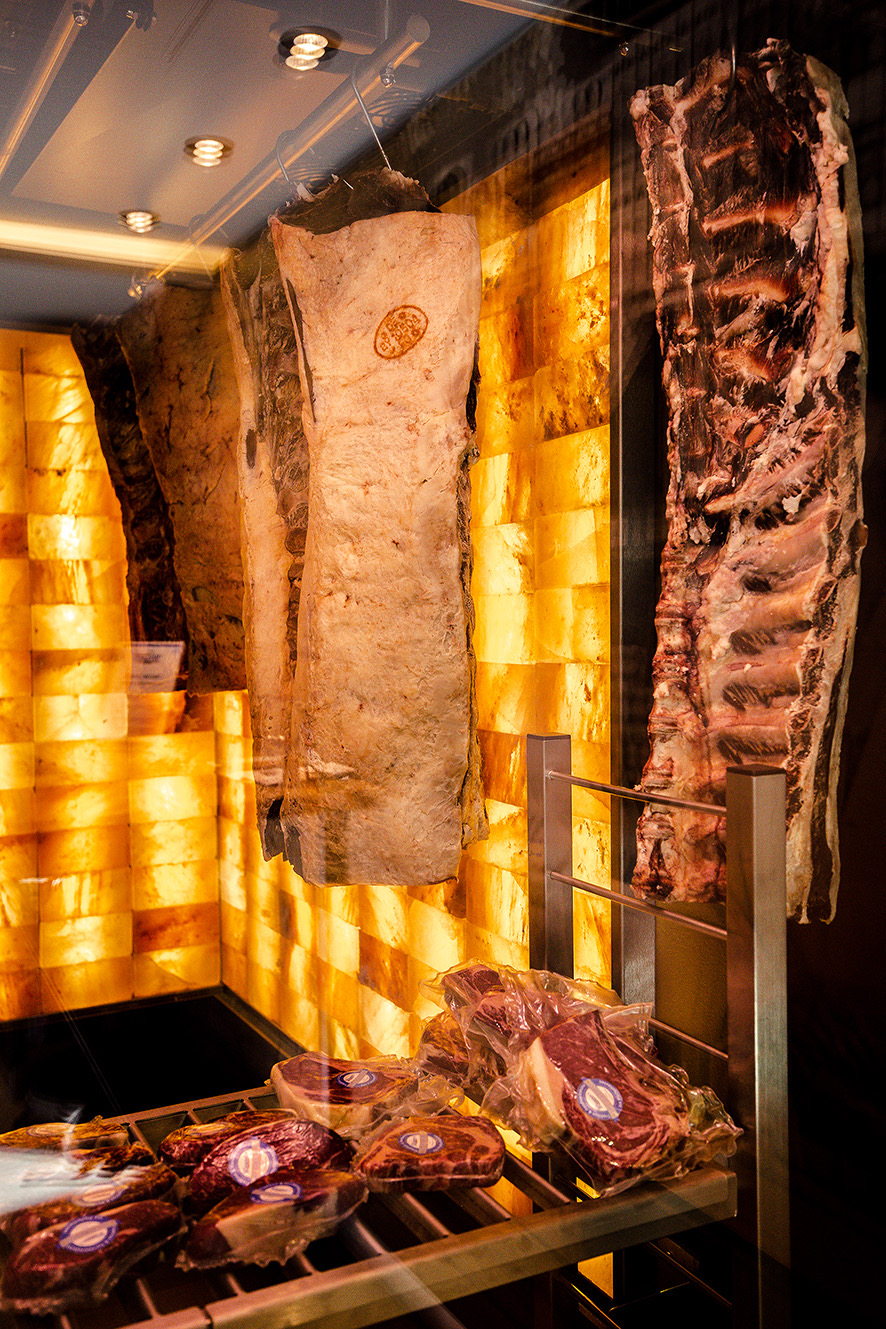.jpg)
What to Do with Dry-Aged Beef Trimmings
During the dry-aging process, the pellicle–the outer layer of the meat—starts to turn a very dark red, almost black, forming a crust on the outside of the meat. This layer protects the meat the same way a rind does with cheese, holding in moisture during the aging process. When the moisture is held within, it helps create a strong, Umami flavor and buttery tenderness. Once the layer is removed during the trimming process, the internal transfer of moisture stops.
This part of the meat must be cut off because leaving it can make it difficult to cook and chew. Because of this step, many people are unsure of what to do with the leftover beef trimmings. It feels wrong to throw away any extra beef, so we’ve come up with a few ways to use dry-aged beef trimmings without wasting them.
How to Use Dry-Aged Beef Trimmings
The trimmings of a dry-aged steak are just as edible as the steak itself. They can be even more flavorful since they’re packed with all the seasoning and flavor from the aging process. Most chefs and butchers will throw out this byproduct because of mold that is formed on the dry-aged meat.
If aged properly, the pellicle can be completely bacteria and mold-free, making it safe to eat. With dry-aging coolers that have Himalayan salt like The Aging Room Chamber, the salt carries natural antibacterial properties that enhance the flavor profile, but also assist in the aging process.
Here are some ideas on how to use dry-aged beef trimmings:
Add them to soup or stews for extra flavor and protein
Grind them up and use them to make burgers
Make your own beef jerky
Make a dry-aged beef stock
Use them as a dry rub for grilled meats
Chop them and use them as a topping for salads or garnish
Finely chop and use them as a savory seasoning for vegetables
Learn More About The Aging Room Chamber
By combining traditional aging processes and modern technology, The Aging Room uses state-of-the-art climate control equipment with Himalayan salt to create an aging-friendly, natural microclimate to dry-age steaks to their fullest potential. The steak rests and ripens in a natural environment, never frozen, vacuum-sealed, or chemically preserved, allowing restaurants, butcheries, and retail shops to utilize every part of the meat. Learn more about the benefits of The Aging Room Chamber.Other news
-
 News
Why Full-System Certification Matters in Dry Aging Equipment — And What Sets The Aging Room® Apart
18 Jul 2025
News
Why Full-System Certification Matters in Dry Aging Equipment — And What Sets The Aging Room® Apart
18 Jul 2025
-
 News
Understanding the Art of Aging: How Dry Aging with Himalayan Salt Transforms Meat Quality
01 Jul 2025
News
Understanding the Art of Aging: How Dry Aging with Himalayan Salt Transforms Meat Quality
01 Jul 2025
-
 News
UV Light vs. Himalayan Salt in Dry Aging Meat: What Really Matters for Flavor and Quality
03 Jun 2025
News
UV Light vs. Himalayan Salt in Dry Aging Meat: What Really Matters for Flavor and Quality
03 Jun 2025